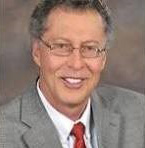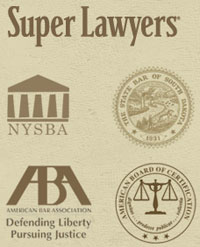BROWNFIELDS – AN UNDERUSED PART OF NORTH DAKOTA’S ENVIRONMENTAL LAW
Environmental compliance and due diligence in the oil patch is not as standardized as other commercial and industrial operations and transactions. I will leave for another discussion an assessment of environmental law and regulations in the oil and gas industry and in this article address a little used part of North Dakota’s environmental laws called brownfields.
Laws by their nature create tension between different economic interests in a democratic society. When the free market system includes environmental laws which restrict and affect the marketability and development of contaminated or polluted property, the system must also include a mechanism to protect the owner’s ability to sell and develop such property. Contemporary environmental laws contain many restrictions on transfer of property, as well as hazardous spill reporting and cleanup requirements. Such laws affect the marketability of property. State and federal agencies in recent years have focused attention on the cleanup and redevelopment of contaminated property sites in North Dakota. These sites are called brownfields.
Brownfields are properties the use, expansion or redevelopment of which is complicated by the presence or potential presence of a hazardous substance. Environmental laws now include financial assistance for the cleanup of such properties. Brownfield cleanup can address mine-scarred lands, sites contaminated by petroleum, chemicals or sites contaminated as a result of manufacturing.
Environmental issues in North Dakota are primarily the jurisdiction of the state’s Department of Health, Environmental Health Section (EHS). The EHS has significant management authority over environmental matters in the state and has had cooperative agreements in place with the U.S. Environmental Protection Agency (EPA) under which the EHS is the principal state government agency dealing with environmental matters.
North Dakotans are fortunate in that the EHS is generally accessible and open in its regulatory and management style. Such accessibility is not always the norm among environmental agencies across the country. EHS has established policies that promote the development of environmentally affected properties. The brownfields program is application based. Cities, counties or local government groups may apply for assistance under the program.
Many North Dakota municipalities and local governments are missing the boat. Not all environmental regulations are bad. One useful but underused environmental program in the state is North Dakota’s State Response Program (Brownfields Program). This program is a source of funding for site assessments and, if necessary, cleaning up qualified brownfield sites throughout the state. Access is available to qualified property owners (counties and municipalities), community development organizations, and nonprofits. The expenses of approved site assessment and environmental testing can be cost free to the property owner; The North Dakota Brownfield Program manages and pays for these expenses.
One can be fairly certain that in North Dakota many cities and counties, in both rural and urban areas, have abandoned, underutilized, or potentially contaminated properties.
EPA data indicates that only three North Dakota municipalities and five tribal organizations have received Brownfield Grants since 1998.The commonly held view is that brownfield sites are only associated with abandoned manufacturing sites that are more prevalent in the rust belt states. Brownfield sites exist in every state.
In years to come we will probably see an increase in North Dakota brownfield sites due to the development of oil and gas resources in the Bakken Formation. The state’s Brownfield Program will enable qualified parties to clean up Brownfield sites so they can be put to better economic use for the benefit of investors and residents of North Dakota.
The EPA reports that qualified applicants are eligible for up to $200,000 in cleanup grants per property and that 3 out of 4 applications received in 2013 were successful. The cleanup grant recipients are required to provide a 20% share (e.g. $200,000 Grant has a $40,000 match). The cost share does not have to be money; it could be in the form of a contribution of labor, material, or services from a non-federal source. Hardship waivers can also be requested.
That environmental problems with properties should remain hidden based upon a public misunderstanding is the old way of doing business. EHS and affected communities and counties should partner up and pursue this course of action. It is in the economic interest of the communities in which such properties are located and the state.
David Ganje of Ganje Law Offices practices natural resources, environmental and commercial law in North Dakota and South Dakota. The website: lexenergy.net The contents of this article are intended for general information purposes only and are not intended as legal advice.





